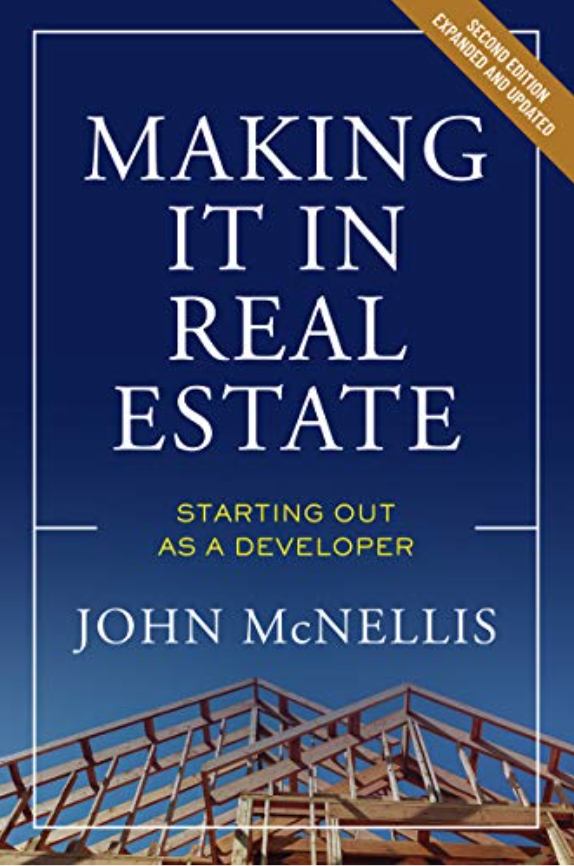Just as historians still question the precise date the Romans became the Italians, developers are by no means in agreement as to exactly when every pothole or ditch that could hold rainwater for a week became a protected “wetland.”
While grading on our latest project finally started last week, this story began when we came across a good site in 2005 in a small city on the Bay Area’s outskirts. We guessed that Wal-Mart might want a store there and asked to meet with the city manager and mayor to see if we had a chance in hell of getting one approved.
Ordinarily, prudence dictates a flak jacket, if not a bomb suit, when suggesting Wal-Mart to public officials, but this town needed development so badly the meeting was worth a try. To our delight, the city representatives said they would love a Wal-Mart; they wanted the development, they needed the jobs and they wanted their citizens to be able to shop for necessities in their own backyard. And they wanted to force the town’s one real supermarket to lower its monopolistic pricing.
In short, the mayor did everything but promise us a ticker-tape parade if we developed the property. Thus, we swiftly made a deal to buy the site and, ultimately, to sell a portion to Wal-Mart.
The city was as good as its word and helped us through the entitlement process. But the ink was scarcely dry on our approvals when the ubiquitous, union-funded “citizens group” filed a lawsuit, challenging our environmental impact report. The suit was swiftly recognized for what it was and thrown out by the courts, but it had the effect of focusing the attention of four separate federal and state environmental agencies on the property.
Not even John Muir could describe this particular 20-acre patch as anything but unused farmland on the edge of suburbia. Surrounded on all sides by highways or residential development, the property was the suburban equivalent of an infill development site.
Years earlier, a farmer had dug an open ditch across the property to drain it and keep it from becoming a swamp. The property contains no endangered, threatened or even mildly harassed species. We had nothing more exotic than a former farm that all truly interested parties—the city, Wal-Mart and we—wanted to develop.
Despite that, we were swept away on an environmental odyssey about which a modern-day Homer might have written a paean. Instead of the Scylla and the Charybdis, we had the U.S. Army Corps of Engineers and the U. S. Fish and Wildlife Service. Rather than the Cyclops and the Sirens, we had California’s Department of Fish and Game and its Regional Water Quality Control Board. All threatened, if not heroic tragedy, then infinite delay.
As it turned out, the feds had no heart for the ensuing war of attrition—perhaps they listened to the poor city’s anguished pleas—and contented themselves with making us prove that none of the site’s potholes harbored any “endangered vernal pool crustaceans.” This is governmental-biology speak for tiny shrimp that remain dormant until water is added—you can probably still buy them from comic book ads.
But California Fish and Game decided our farmer’s ditch was in fact a “stream” and therefore had to be maintained in perpetuity. Since the ditch split the site like the DMZ, we could only resolve this by agreeing to construct a costly underground culvert.
The Regional Water Quality Control Board proved the most trying of the agencies. In fact, its happy warriors tried nearly everything for years to prevent our development. Adopting the charitable view that they truly believed our retail center would adversely affect water quality is simply not credible. Any water that came to the property migrated there from already developed land and any water that left it swam into the brackish delta a few hundred yards away.
Everyone, including the city, was convinced the board’s position ultimately had nothing to do with water quality and everything to do with killing our project. The more interesting question was whether the staff’s animosity would have been the same had we been proposing say Target or Whole Foods rather than Wal-Mart. We think not. We’re convinced we lost nearly five years on this project because the Regional Board decided Wal-Mart was bad for this city—if not for all cities—and used every tool in its considerable arsenal to kill the development.
While a five year delay means significant carrying costs and lost profits to Wal-Mart and us, it’s easy to argue that the Board’s tactics hit the city much harder. If our Wal-Mart had opened five years ago and averaged $50 million in annual sales, the city would have received $2,500,000 in sales tax receipts over the five years (California cities are allocated 1 percent of sales as their share of taxes). For a city with an annual budget of just $10 million and a projected shortfall of $1.7 million in this fiscal year, a revenue loss of this magnitude is staggering.
For the record, we have been working with Wal-Mart for nearly 20 years—it has been a great partner—and the quality of its developments rival those of comparable retailers. Let’s face it; the heartburn over Wal-Mart is not its impact on faerie shrimp, but on wages. The solution is not to attempt to zone Wal-Mart out of existence or block it with specious environmental concerns but to mandate higher wages and better health care across the board for all retailers, including the public darlings like Target whose entry-level wages and benefits are the same as Wal-Mart’s.


